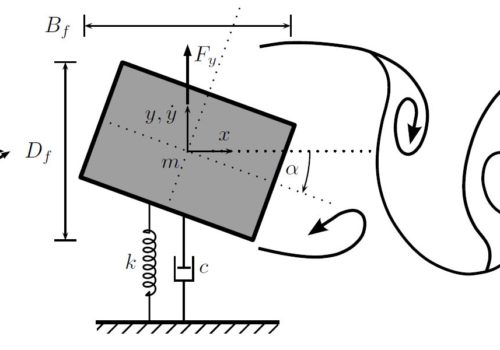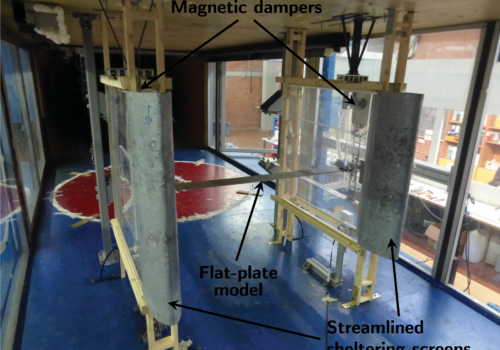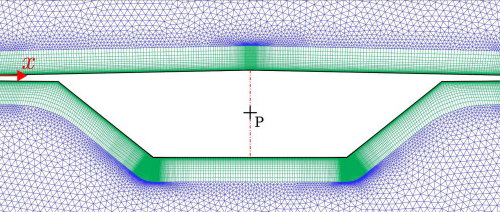The complex interaction between air flow and solid structures has always been a very important issue. Although not fully understood, it was of great concern for civil engineers already in the XIX century, when several bridges collapsed or were severely damaged because of wind effects. In the first half of the XX century, the fluid-structure interaction phenomena were practically forgotten in civil engineering, whereas they were carefully studied in the aeronautical field, where the theory of aeroelasticity was funded. After the Tacoma Bridge failure in 1940 this discipline has got back to the civil engineering sphere as well and nowadays the effects of the fluid-structure coupling are more and more important due to the increased flexibility of modern constructions.
The basic idea of the fluid-structure interaction is that the flow around a solid structure produces steady and unsteady loads which tend to elastically deform the structure inducing vibration. If this motion is large enough, it is able to influence the flow field around the body and consequently to change the aerodynamic loads. This feedback is the actual core of aeroelasticity. In particular, since bridges and civil structures in general cannot be considered streamlined profiles, we are mainly interested in bluff-body aerodynamics and aeroelasticity, where flow separation plays a key role.
CRIACIV Wind Tunnel activities have been particularly devoted to this topic over the last decade, investigating several aeroelastic and aerodynamic instabilities, such as coupled flutter, galloping, VIV and also VIV-galloping interference.



